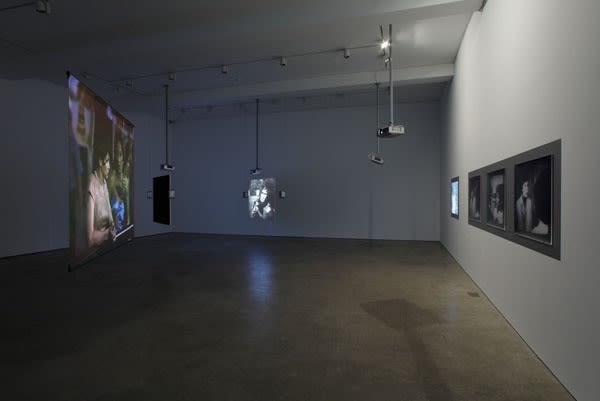Wilkinson Gallery is pleased to announce the first solo gallery exhibition in the UK of the formative video and installation artist Dara Birnbaum, following her substantial retrospective at Stedelijk Museum voor Actuele Kunst (S.M.A.K.), Ghent earlier this year. This exhibit will travel to the prestigious Museu Fundação Serralves, Porto, to open early 2010.
Dara Birnbaum has spent a career analysing the politics of image making and distribution, particularly looking at television, the dominant popular visual language of the 20th century. She initiated her practice in the mid-1970s through her interest in the emerging discipline of film theory, which simultaneously enthused and angered her. The former due to the discipline’s analytical approach to the moving image, the latter as a result of the lack of engagement in the meaning of television: most theorists exclusively favouring the study of the previous fifty years of cinematic history. Birnbaum came to prescribe television broadcasting in terms of a one-way visual power play, in which the broadcaster fed the consumer a constant, and unstoppable stream of imagery. Each image was replaced by another so quickly, and without record, that any decoding proved impossible.
This notion directly led to the formative work Technology/Transformation: Wonder Woman (1978), in which all the transformative twirling motions of the eponymous character (as she changes from mortal woman to patriotic-imbued, sexually-aware wonder woman) from one episode were isolated and collated, leaving the heroine in a constant state of flux. Whilst the use of technology marked out Birnbaum as an early pioneer of video, in a time when the medium was not accepted as a high art by the major institutions, her work can also be viewed as operating in the prism of the mid-twentieth century ready-made: taking an existing object and recontexualizing it. As such Birnbaum strenuously worked at using the actual fabric of television- not film - as she obtained (pirated) raw footage from television stations in the pre-VCR days. This contextualization was itself a political act, and Birnbaum’s work remains political to date, be it the identity politics of Technology/Transformation: Wonder Woman and the Damnation of Faust Trilogy (1983 – 1987), or based upon a more ardently global perspective, such as in Hostage (1994) which takes in the Red Army Faction’s kidnap of German industrialist Hanns-Martin Schleyer and Tiananmen Square: Break-In Transmission (1990), a multi-screen installation sampling and presenting a range of imagery from the revolutionary event. For Birnbaum the political commentary is never aimed at the event itself, nor the characters involved, rather it is framed by television’s retelling of the subject matter.
Birnbaum’s feminist consciousness in the 1970s is an additional testament to this interest in representation over actuality. Her work eschewed the closed barriers of militant activist feminism, but nonetheless, through the reinterpretation of populist imagery and mentality, sort to expose television’s latent male orthodoxy. The latter manifesting itself in the ongoing broadcasting clichés: the paternalistic news presentation, the sitcom comedy couple, the emotive superhuman. In isolating these representations Birnbaum put the subjugated female image centre stage. The absorbtion of representation, the visual clichés, continues to dominate the formulation of our present reality (further continuing in the multimedia, YouTube epoch). Consequently, Birnbaum’s deconstruction is as biting as ever.
Dara Birnbaum lives and works in New York. She recently enjoyed a major retrospective at SMAK, Ghent, traveling to the Museu Fundação Serralves, Porto. ; She has previously had overviews of her career held at KUNSTHALLE Wien and the Norrtälje Konsthall. Retrospective screenings include The American Film Institute, Los Angeles and Washington; Kunsthaus, Zurich; and Kunstmuseum, Bern. She has also exhibited in Documenta VII, VIII and IX, as well as numerous Venice Biennales. Solo international exhibitions and screenings of her work include The Museum of Modern Art, The Whitney Museum of American Art, and The Jewish Museum, New York City; IVAM Centre de Carme, Valencia; and the Musee d'Art Contemporain, Montreal; as well as being included in a multitude of international group shows and museum collections. Dara Birnbaum has received numerous awards including the Special Jury Prize, Deutscher Videokunstpreis, Südwestfunk, Baden-Baden and Zentrum fur Kunst und Medientechnologie, Karlsruhe, 1992; TV Picture Prize, XII Festival International de la Vidéo et des Arts Electroniques, Locarno, Switzerland, 1991; Certificate in Recognition of Service and Contribution to the Arts, Harvard University, 1988; The Maya Deren, American Film Institute Award for Independent Film and Video, 1987; First Prize for Video, San Sebastian Film Festival, 1983
